Integrated Pest Management
Current Pest Monitoring Program
In order to conduct surveys and trapping programs effectively, it is crucial to have an extensive understanding of the locations of all cotton fields throughout the state. At the beginning of each growing season, field personnel use GIS mapping technology and maps provided by the Farm Service Agency and growers to identify and document every cotton field in the state. Throughout the season, the Council continually monitors and updates any changes to cotton field locations and boundaries until crop destruction is complete. This accurate mapping allows for effective targeting of surveys and traps for key pests.
Despite being declared eradicated in Arizona, the Pink Bollworm and Boll Weevil are continuously monitored by the ACRPC in case of resurgence. Our proactive approach against these formidable foes involves innovative techniques, collaborative programs, and rigorous research. Dive into our dedicated measures below to understand how we work towards shielding and enhancing the state's cotton industry.
The cotton pest, Oxycarenus hyalinipennis, also known as the Cotton Seed Bug, is a significant threat to cotton production worldwide, causing damage to both seed and lint quality. This is especially problematic for Arizona, where cotton seed production is a major component of the industry. In 2023, Arizona Cotton Research and Protection Council added this invasive pest to our monitoring program. The primary goal of the survey is to ascertain if CSB is present in Arizona. This will be achieved by surveying a minimum of ten percent of statewide cotton production beginning in July as mature bolls become present. Due to the known presence of CSB in California, greater sampling effort will occur in the western regions, particularly near major travel routes.
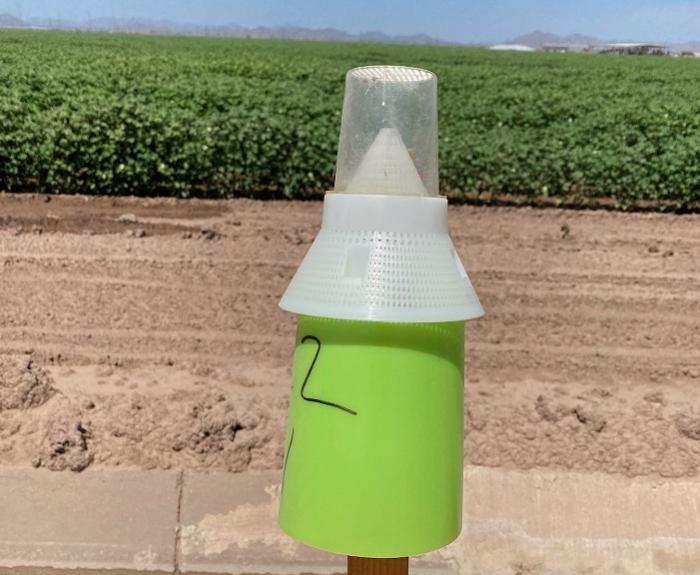
Boll Weevil Trapping
The Boll Weevil Trapping Program began in 1981, under the direction of the Arizona Agricultural and Horticultural Division and in 1985, under the direction of the newly formed Arizona Cotton Research and Protection Council. The Boll weevil trap has three parts: a body, a molded screen cone and a collection chamber. The green-yellow trap body mimics the plants the boll weevil lives in and feeds on. A pheromone lure is placed in the collection chamber to attract weevils along with an insecticide strip to kill weevils that enter the trap. Weevils attracted to the trap land on the outside of the body and crawl to the inside of the cone. An opening in the top of the cone allows the weevils to enter the collection chamber. Trapping density is one trap per 160 acres of planted cotton across the state.
Traps are placed around the perimeter of cotton fields on a four-foot-long, wooden stake driven into the ground. Each trap is set on a nail halfway driven into the top of the stake to hold the trap upright in high winds or other disturbances. Traps are placed as near to the cotton field as possible but in a position that avoids the regular path of field equipment or other traffic. This keeps the traps from being damaged and maintains a high level of trap effectiveness. Also, the trap is positioned in as open an area as possible, free from weeds, brush or other obstacles that may obstruct trap visibility or interfere with free airflow to and from the traps. The work unit number and field number are marked on the outside of the trap body. Traps are inspected bi-weekly for weevil activity.
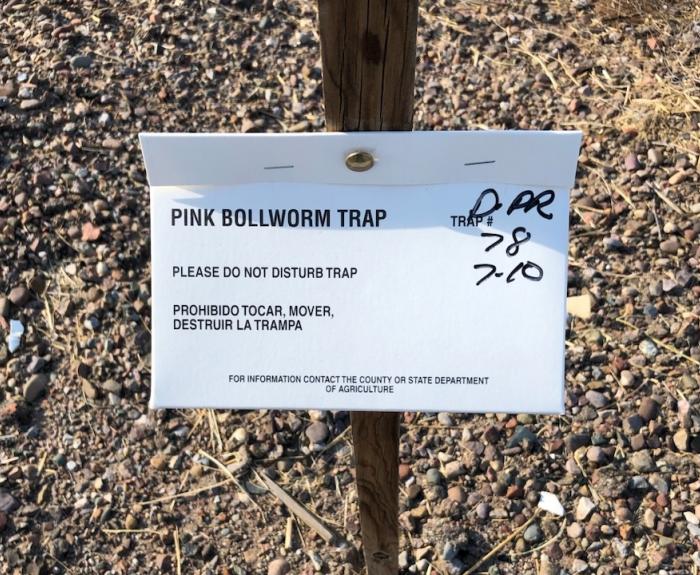
Pink Bollworm Trapping
Trap monitoring to detect adult pink bollworm moths is ongoing in order for the Program to provide industry with an early warning in the case of a reintroduction of the pink bollworm to Arizona. The Program uses a delta trap made of cardboard that is sticky on all three inside surfaces. A pheromone lure that attracts male pink bollworm moths is placed inside of the trap. The traps are placed at the edge of the cotton field and are serviced and replaced biweekly. The traps are placed below the boll weevil trap on the same four foot stake.
If they contain moths that look similar to pink bollworm, the trap containing the specimens are sent to the ACRPC Phoenix laboratory for identification. Current trapping density is one trap per 160 acres of planted cotton across the state.
Desert Line Trapping
Desert line traps are in place throughout Arizona to intercept the possible reintroduction and migration of the boll weevil and pink bollworm.
Traps begin from the southern border, and transit the state from west to east through the cotton-growing areas. The trap lines consist of a boll weevil trap and a pink bollworm trap on a wooden stake and are placed between two and five miles apart, depending on the particular area.
Trap lines are placed along transit highways, railroad lines, and across the desert terrain between cotton-growing areas. In early 2024, additional desert line trapping will once again be deployed on the southeastern border of the state.
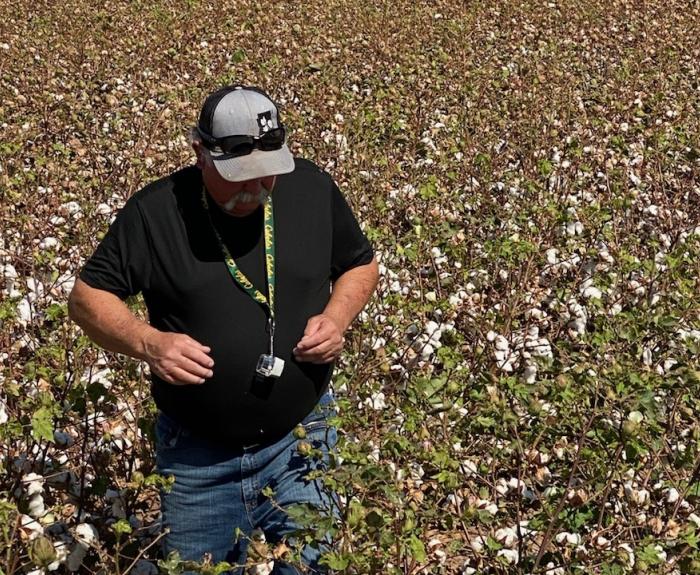
Cotton Seed Bug Surveying
Cotton Seed Bug surveying is done by walking through the field and visually inspecting bolls on cotton plants. Visual inspections are performed on a minimum of 25 randomly selected mature cotton bolls from each of four quadrants of the cotton field, for a minimum of 100 bolls per field per sample date. Sampling efforts are concentrated near, but not limited to, field edges. Suspect insects are collected either using a mouth aspirator; or by cutting the bolls and tapping the boll inside a plastic bag to dislodge the insect. Insect specimens are then transferred into a vial and sent for preliminary identification by ACRPC personnel.
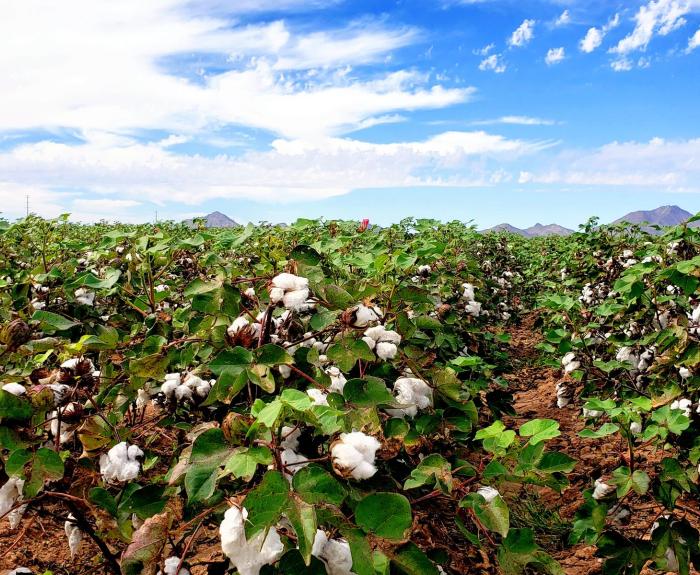
Other Pests of Concern
Old World Bollworm - Helicoverpa armigera
The old world bollworm (Helicoverpa armigera) is a potential pest in Arizona, particularly in cotton and tomato fields. The old world bollworm is a moth that lays its eggs on the underside of leaves and stems of host plants. The eggs hatch into larvae, which feed on the leaves and stems of the plant, causing damage and reducing the plant’s ability to photosynthesize and grow. The larvae then enter a pupal stage, after which they emerge as adult moths to start the cycle again.
Cotton Mealy Bug
The cotton mealybug, also known as the pink hibiscus mealybug, can be a problem in Arizona. The cotton mealybug feeds on plant sap and excretes honeydew, which can lead to the growth of sooty mold, further impacting the health and productivity of the plants.
Whitefly - Q Biotype
The white fly, also known as Bemisia tabaci, is indeed a significant problem in Arizona.
These pests feed on plant sap, causing damage to the leaves and reducing the overall vigor of the plants. The infestation of white flies can lead to yield losses and increased production costs as farmers have to implement control measures to manage the infestation.
Bt Resistance Monitoring
The Council is deeply involved with the University of Arizona entomology department in monitoring for potential pests that may develop resistance to Bt technology. Dr. Bruce Tabashnik and his research team continue their studies on the evolution and management of insect resistance in crops that are genetically engineered for pest control. See our Research page for more details.
Eradication and Historical Information
The pink bollworm (Pectinophora gossypiella) and the boll weevil (Anthonomus grandis) are significant pests that have historically caused substantial damage to cotton crops in Arizona. Extensive eradication efforts were made to eliminate these pests.
Pink bollworm eradication included the use of integrated pest management strategies such as pheromone-based mating disruption techniques, the adoption of genetically modified cotton varieties that express insect-killing proteins from the bacterium Bacillus thuringienis (BT), and the release of sterile insects. The primary approach to eradicating the pink bollworm was the deployment of the sterile insects, which involved mass-rearing sterilized insects and releasing them to mate with wild counterparts, leading to non-viable offspring and reduced populations.
For the boll weevil, eradication efforts involved coordinated monitoring, early detection, and rapid response measures. Implementing pheromone traps and field surveys allowed for prompt detection and response to infestations. Additionally, strategic insecticide applications targeted boll weevil populations at critical stages to mitigate impact.
Overall, the collaborative efforts of various stakeholders contributed to successful eradication programs for both pests in Arizona, protecting crops and supporting sustainable practices.
Boll Weevil Eradication
The Boll Weevil is a major cotton pest that originated in Mexico and spread to the southwestern U.S. in the late 1800s. Extensive damage to cotton crops prompted the development of integrated pest management and an eradication program. This program used pheromone traps to monitor weevil populations, insecticides and biological controls to suppress them, and required participation from cotton growers in managing crops. The eradication successfully eliminated Boll Weevil infestations in many regions. However, the pest's high reproductive potential means continued vigilance through monitoring, control measures, and coordinated management is essential to prevent reinfestations.
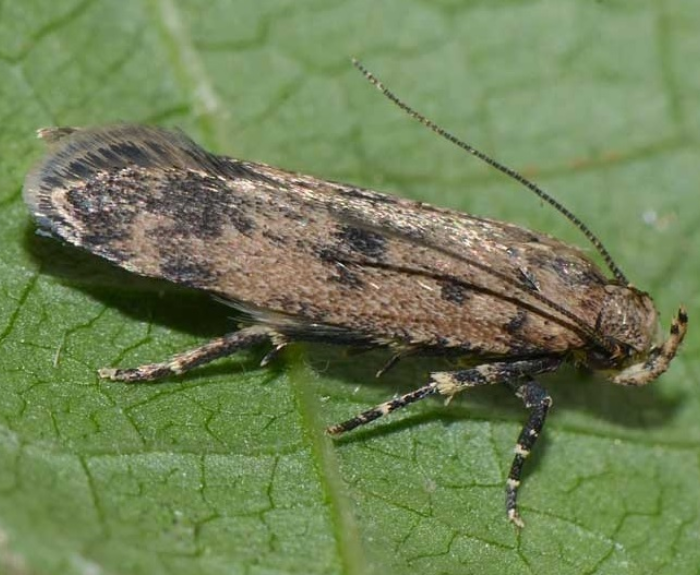
Pink Bollworm
The Pink Bollworm Eradication Program in Arizona aimed to control the pink bollworm, a major cotton pest. It utilized integrated pest management techniques like pheromone monitoring, mating disruption, sterile insect release, biological control, and targeted insecticides. The program involved collaboration between researchers, farmers, extension services, and government agencies. The program minimized economic losses from the pink bollworm while reducing pesticide use and environmental impact. Continuous monitoring for pink bollworm ensures early detection and reduced risk of re-infestation.
Photo Credit: biochemtech.eu
Whitefly Bemesia tabaci
The whitefly, Bemisia tabaci, represents one of the most threatening insects to the Arizona cotton industry. It is the primary cause of sticky cotton.
In November of 2004, a new bio-type of whitefly was discovered in a Tucson, AZ nursery by Dr. Tim Dennehy, University of Arizona. It was of tremendous concern as it was much more resistant to chemicals than our B biotype. A special ACRPC meeting was held April 14th, 2005 in Phoenix, AZ in order to address this discovery. Subsequently, a Q Biotype Task Force was enacted involving several industries.
The Q Biotype Task Force's mission statement is: To address the issue of the Q biotype of the whitefly Bemisia tabaci from a multidisciplinary approach in order to identify regulatory, research and control (alternatives) to prevent or minimize the pests effects on the various industries impacted while concurrently protecting American agriculture.
Powerpoint presentations made by Dr. Tim Dennehy and Dr. Judy Brown with the University of Arizona during the April 2005 ACRPC meeting are available below.

